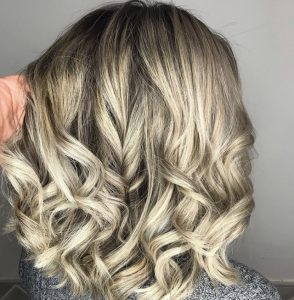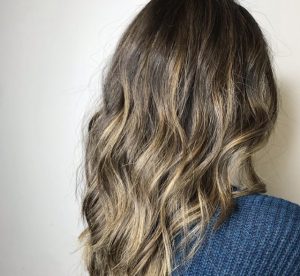You see a great photo, or watch a video of hair that you want. You go into the hairdresser, show them the pic and the hairdresser then proceeds to explain the whole job with what sounds like a language out of a book by Tokien. You smile and nod and agree that it all sounds great, but secretly you are super confused and praying it all goes well. Well lets decipher some of that language and why hairdressers use the words when they do.
The ever popular- Balayage Bal:ay|age- This word is actually a french word that means sweep or paint. There is a distinction between the technique of painting the hair and the look of balayage. Most pictures tagged balayage show a lovely darker root to a lighter bottom. This look can be achieved by using many techniques. Balayage is one of them.
Another one of those ways is – Foilage- This technique is very similar to above. The only distinction is that the balayaged pieces are put into a foil. The reason a hairdresser may decide to do this is to achieve lighter/more extreme results or to prevent the balayage pieces from touching each other.
Hilight– This can be done in a multitude of different ways and colors. This is used when a client expresses that they want to go lighter (not just with colour). Hilights offer lightening with multidimensional results.
Low light– This is used usually when a client is light and wants to go darker (not just by slapping a dark color on all over). This offers either dimension to a light color that is too solid, or adds flickers of another color that is darker in nature. It can be a range of color tones like redish, ashy brown, or golden deep brown.
*just remember hilight-lighter than current hair, lowlight-darker than current hair
platinum card
Platinum card- This is used when a client wants a really extreme blonde. The hairdresser will use a series of weaves and slices in folded foilpacks almost back to back over the whole clients head. Very little hair is left out of the foiled packs. This will allow maximum lightening with control.
Shadow root or root smudge- This is where the client has a darker root. Its used in so many different ways and intensities. The darker color is usually half an inch down from scalp were it melts into the end color. If the client show a picture where the color contrast is quite a bit darker on the root then the ends the hairdresser would formulate accordingly. It can be done as the 1st step process (initial colour application) or as a toner after foiling techniques are done depending on the look the client wants.

shadow root
Color Melt- This is much like the above, but the darker root is dragged a bit lower(1-4 inches) where it then begins to gradually melt into the color on the ends. Both these techniques can be done with all kinds of colors, however the idea is to go from darker to light.

color melt
Base breaker/Base softener– After a hilight the clients hair may look streaky or dark on the root. The hairdresser may not want to smudge the root if the client desires a bright blonde so the hairdresser will sometimes use a toner that lightens the clients natural base color while also toning the hilights.
Hope this helps a bit. Let me know if there are any other hair color words you want me to decode in the comments.


Your thoughts, please